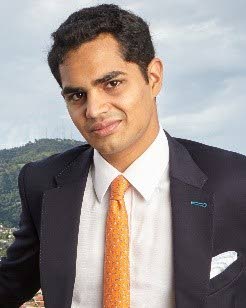Private medicine salve for public health

kmmpub@gmail.com
Beds: unavailable. Procedures: unavailable. Drugs: unavailable. Doctors and nurses: unavailable. Even the tiniest but necessary hospital supplies are unavailable. We have committed and capable doctors, nurses and administrators. But too many who enter our hospitals still leave sick – or don’t leave at all.
The Government has made a solid effort to improve care and seen some success. More infants now live to terrorise their parents, for example. But it is hamstrung by scarce resources and unresolved questions.
To what extent should society heal its sick, and care for them? What can we afford? What do we want to pay for?
We have operated for years under the useful fiction that we provide total healthcare to all, free at the point of delivery. In that, we are not alone amongst the many struggling nations that have avoided making those choices.
Beyond the daily miseries faced by many, knock-on effects weigh heavy. Diabetes, hypertension and cancer alone cost us $8.7 billion annually: more than five per cent of GDP.
Instead of pretending we have the resources and ability to do everything well, we should define what exactly we can do well. This requires hard choices. There might be several different procedures for removing a cataract, for example. Some may be more expensive, but are less invasive, less risky and have shorter recovery times. With scarce resources, which of those should a doctor use?
Doctors right now are forced to make these decisions on the spot – based on the time and material at their disposal. This results in inequality within the system. It puts the burden on doctors to make what are fundamentally cost-based decisions instead of being able to focus on practising medicine.
This is no one person’s fault. Because we are trying to do everything with scarce resources, the inevitable outcome is that no one is satisfied, despite the best efforts of exhausted and overworked doctors, patients and administrators.
But if we do make those tough decisions, we will open the door to greater opportunity and efficiency.
The simple existence of our large private healthcare industry is the greatest indictment of the present system. But it could be the solution. If we define and standardise the type of care we want to provide, we can partner with private practices to save money and improve care.
Cutting costs doesn’t mean sacrificing care. According to the World Bank, as of 2016 we spent 6.5 per cent of our GDP on direct health expenditure. Singapore, which works closely with the private sector, has been able to obtain better care while spending only 4.5 per cent.
The Government has already had success. Its external patient programme sends patients for dialysis treatment from private operators. PwC has shown that this model can be successful, particularly for diagnostic services like retinal screening, or for straightforward services like dialysis. India has launched seven projects in teaching hospitals across the country, with more in train.
We have the expertise. At the conference last week run by the Ophthalmological Society of the West Indies – put on with major input from doctors Deo Singh and Sonja Johnston – experts from across the region presented data on everything from waiting times to the benefits of patient screening.
Unlike in totally private systems like the US, where costs have spiralled out of control, the State still retains negotiating power. As PwC notes, competition between private bidders can lower costs, increase efficiency and encourage innovation.
Standardising and comparing the costs of current procedures against the private sector could even point out opportunities to streamline public care. Standardisation and analytics have saved the Cincinnati Children’s Hospital US$50 million over two years.
Before a patient at Dr Shivanand Ramdeen’s ophthalmological practice can see him, they are screened by both an administrative team, and an optometrist to ensure the only cases that arrive on his desk are those that actually require a specialist surgeon. This allows him to see almost 80 patients a day.
The public sector is constrained by very tight budgets. Partnering with private doctors can open the doors to more staff, technology and medical equipment. It allows for innovation.
Dr Ronnie Bhola’s Caribbean Vitreous & Retina Surgery serves thousands of patients with a lean organisation. He has introduced one of the first private-sector diabetic eye-screenings in the hemisphere.
In practice, we must make hard choices. We must admit that we cannot provide gold-plated care to everyone. Far better that we aim to do less and deliver than aim to do everything and satisfy no one.
Kiran Mathur Mohammed is a social entrepreneur, economist and businessman. He is a former banker, and a graduate of the University of Edinburgh.

Comments
"Private medicine salve for public health"